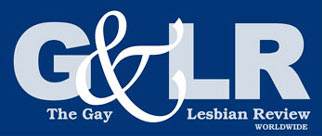Get more! Sign up for PLANSPONSOR newsletters.
A Review of QDIA Regulations
Qualified default investment alternatives (QDIAs) are soluble options to create portfolio growth for defined contribution (DC) plan participants while protecting plan fiduciaries.
QDIAs were introduced in 2006 by the Pension Protection Act (PPA) and offer a path for plan sponsors to designate default investment alternatives for participants who fail to choose investments. Plan fiduciaries can select between target-date funds (TDFs), lifecycle funds, managed accounts and balanced funds.
Balanced funds offer a mix of equity and fixed-income investments. These funds are targeted to the plan as a whole rather than individual participants, says Douglas Neville, attorney, officer and practice group leader at Greensfelder, Hemker & Gale, P.C.
Professionally managed accounts are similar to balanced funds—they also provide a mix of equities and fixed investments—but they are specifically tailored to each individual participant. TDFs invest based on a participant’s age or time to retirement, and lifecycle funds invest according to a participant’s risk tolerance, which also could be based on age.
Providing a QDIA offers two main advantages: For plan sponsors, it relieves fiduciaries of liabilities related to investment losses, with the added benefit of automatically providing investments that may lead to future growth. This is why QDIAs are most popular in plans with automatic enrollment, Neville says.
“They’re crucial for plans with participants who are not going to be making investment elections,” he adds. “For someone who fails to make an investment election, if you can meet the requirements to satisfy the QDIA rules, it reduces your fiduciary liability significantly.”
Providing a default investment alternative completes all the work in making an investment choice and simplifies the DC plan process by automatically investing participants’ long-term savings, Neville explains.
Follow the Rules
One of the most significant requirements plan sponsors must meet in offering QDIAs is to allow participants to choose their own investment selections, Neville says. If a participant fails to do so by the required deadline, then plan fiduciaries can choose a default alternative.
Second, fiduciaries are required to issue a paper copy of plan notices “at least 30 days in advance of the first time the amount would be invested in a QDIA,” says Neville. For plans with immediate eligibility, the notices must be provided as soon as practicable. Plan sponsors are also required to issue notices annually at least 30 days prior to each plan year.
Plan participants also must be given materials related to the QDIA, such as prospectuses or notices of how the vehicle invests. Additionally, the plan must allow participants to switch out of the QDIA as often as other participants may change their plan investments. At a minimum, plan participants must be given this opportunity at least quarterly, Neville notes.
Finally, there are restrictions on a QDIA’s features. For example, the investments selected cannot impose financial penalties on withdrawals from the QDIA when a participant is moving funds to other investment options for the plan.
Robyn Credico, managing director of retirement at Willis Towers Watson, also mentions that plan fiduciaries must dutifully continue to monitor a QDIA regularly. “The biggest, most important rule is that a fiduciary has to be careful of what they pick in a QDIA and they have to monitor it on an ongoing basis,” she says.
This is particularly true for TDFs. Because TDFs use glide paths that shift from aggressive to conservative over time and are based on a participant’s age, it’s trickier to benchmark these investments against other alternatives. This poses a unique challenge for fiduciaries, Credico says. “Especially for TDFs, you need to benchmark frequently, as to whether or not it is appropriate for plan participants and whether your participants are using it,” she explains.
Plan sponsors typically will provide one qualified default investment alternative (QDIA), but it is possible to offer multiple, different options for distinct groups of participants, also known as hybrid QDIAs, Neville says.
However, hybrid QDIA adoption by plan sponsors is rare. There are different ways the industry defines hybrid QDIAs, but, generally, they are set up so that a certain segment of a defined contribution (DC) plan participant population is first defaulted into one vehicle, and then later defaulted into a different vehicle when certain triggers are met, James Martielli, head of Vanguard Investment Solutions, previously told PLANSPONSOR.
Credico explains that some fiduciaries will offer a hybrid QDIA that first invests participants in a target-dated fund (TDF) and moves them to a more personalized managed account as they approach retirement, such as at age 50, for example.
Since managed accounts tend to have higher fees than other types of QDIAs, they might not be best for younger participants, but they can offer more personalization for moving to more conservative investments closer to retirement, Credico says.

